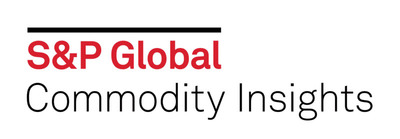NEW YORK, Oct. 09, 2025 (GLOBE NEWSWIRE) — Friendship-tech app Clyx today announced the official launch of its New York City expansion in partnership with Wondermind, the mental health platform founded by Mandy Teefey and Selena Gomez. The…
Author: admin
-
Pause in hostilities a crucial relief for children in Gaza – now it must become a definitive and lasting ceasefire – ReliefWeb
- Pause in hostilities a crucial relief for children in Gaza – now it must become a definitive and lasting ceasefire ReliefWeb
- Watch: Scenes of celebration in Gaza after Trump’s announcement BBC
- Arab party lawmakers praise deal to end war in…
Continue Reading
-

Simone Biles doesn’t rule out competing at LA 2028
The 28-year-old, who claimed three gold medals at Paris 2024, also used the moment to recount her experience at Tokyo 2020 (which took place in 2021), where she withdrew from the artistic gymnastics competition to prioritise her mental…
Continue Reading
-
Absolute Emissions from the Permian Basin Declined Nearly 20% Since 2022, Even as Oil and Gas Production Grew, New S&P Global Commodity Insights Analysis Finds
Absolute Emissions from the Permian Basin Declined Nearly 20% Since 2022, Even as Oil and Gas Production Grew, New S&P Global Commodity Insights Analysis Finds
HOUSTON, Oct. 9, 2025 /PRNewswire/ — Absolute greenhouse gas emissions from the Permian basin—one of the most prolific oil and gas fields in the world, responsible for 40% of total production in the United States—declined every year since 2022, even as production of oil and gas increased, according to a new analysis by S&P Global Commodity Insights.

Absolute greenhouse gas (GHG) emissions from the Permian declined by 25 million metric tons of carbon dioxide equivalent (MMt CO2e) during the years 2022-2024, a 20% reduction during a period when oil and gas production increased by the equivalent of 500,000 barrels per day.
Although the GHG intensity of oil and gas activity—the ratio of emissions per barrel produced—in the basin has consistently declined over the past several years, the reduction in absolute emissions during a period of production growth was a surprise, the analysis says.
“This is a whole new ballgame,” said Kevin Birn, Head of the Center for Emissions Excellence, S&P Global Commodity Insights. “Major Permian producers have a long track record of improvements from an emissions per barrel standpoint, but at the end of the day more barrels produced typically means more emissions. However, over the past few years in the Permian, more barrels came with lower emissions. It’s a have-your-cake-and-eat-it-too moment.”
The biggest factor in the overall emissions reduction has been the improved detection and mitigation of methane, the analysis says. A more potent greenhouse gas, methane emissions account for approximately two-thirds of total emissions in the Permian.
Improved operations, better equipment and the utilization of artificial intelligence and other advanced technologies reduced the methane intensity of Permian production by more than 50% during the 2022-2024 period, according to a previous S&P Global Commodity Insights analysis for Permian upstream methane. The scale of methane reduction outpaced the impact of production growth leading to absolute emissions declining.
“The introduction of higher quality observational data in recent years not only establishes a more credible baseline against which to measure emissions mitigation, it enables technologies and practices that allow producers to improve those efforts, or to even anticipate and prevent emissions altogether,” said Raoul LeBlanc, Vice President, Global Upstream, S&P Global Commodity Insights. “Data show methane emissions management is being increasingly normalized as part of field operations and that is driving methane down.”
The new analysis—which includes methane and carbon dioxide emissions to provide a more complete assessment of the GHG emissions for the Permian—finds that the basin produced nearly 11 million barrels of oil at an average GHG intensity of 22 kilograms of carbon dioxide equivalent per barrel of oil equivalent produced (equivalent to 3.8gCO2e/MJ) in 2024.
However, intensity varied widely from one well to another, ranging from more than 160 kgCO2e/boe (28 gCO2e/MJ) to less than 4 kgCO2e/boe (0.69 gCO2e/MJ), reflecting the dynamic nature of production in the basin.
“The variation of intensity from one well to the next underscores the myriad factors that can impact the GHG intensity of any one asset and that an overreliance on basin-wide averages can be extremely limiting,” said Shane Whipple, Emissions Insight Analyst, Center of Emissions Excellence. “Utilizing S&P Global Commodity Insights’ unique capabilities, we are able to provide a level of granularity to truly understand the nature of upstream oil and gas emissions for each individual asset.”
About the analysis
The S&P Global Commodity Insight’s estimate of Permian emissions includes carbon dioxide, nitrous oxide and methane emissions of upstream oil and gas operations. Coverage includes all drilling and completions (including natural gas and diesel combustion), operations, electricity imports and flaring and fugitives across the three main Permian plays: Wolfcamp Midland, Wolfcamp Delaware and Bone Springs. Midstream transportation emissions are not included.
Upstream emissions estimates make use of a complex, purpose-built bottom-up model built atop of S&P Global Commodity Insights extensive upstream database and coverage of all active wells in the Permian on a monthly basis over the entire time period presented in this study. This model is independent of U.S. Environmental Protection Agency reporting although is regularly compared against it and other public sources.
Beginning in 2022, S&P Global Commodity Insights estimates made use of methane observation data from Insight M. These data greatly increased both the volume of methane emissions and the reliability of those estimates. Estimates prior to 2022 used sophisticated calculations and factors to estimate venting and fugitive methane emissions but were notably lower quality. More information on the methane observation data used from Insight M is available here: https://view.highspot.com/viewer/651121fb7c2bcb2c1c1b9fb0f6868d3f#1
Coverage of upstream activity is comprehensive. In 2024, coverage included all 160,000 active wells and 12,000 new wells in the Wolfcamp Midland, Wolfcamp Delaware and Bone Springs—100% of producing wells. Methane observations from Insight M for the same period included 81.8% of the 160,000 active Permian wells, (78.5% of conventional wells and 88.6% of unconventional wells). These assets supplied 90.0% of the 3.9 billion boe produced in 2024.
Insight M overflights observation data provides a level of resolution that is up to 5 times greater than that of satellites, providing reliable attribution not only by facility, but in most cases to specific assets or pieces of equipment.
Threshold for detection isn’t a factor for methane estimates prior to 2022 due to the methodology model estimates. Insight M methane observations since 2022, are as low as the range of 50-10 kg/hr depending on the specific overflight. These observed volumes account for more than 68% of total methane released to the atmosphere from upstream oil and gas operations. The volumes from all sources below this threshold were estimated using the Rutherford model developed by Stanford University and included in the totals used in the analysis. More information on the methodology employed by Insight M can be found here: https://view.highspot.com/viewer/992ecc322aa7c4d80d5f6b15a4a0f2c4#1
Global Warming Potential Factor:
S&P Global Commodity Insights conversion of methane to CO2 equivalency are based on a Global Warming Potential (GWP) factor for 100 years of 28 tons of CO2 per ton of methane. Using the 20-year factor of 86 would thus increase both the emissions reduction and the continuing emissions to 3.07 times the figures cited in this report.
Media Contacts:
Jeff Marn +1-202-463-8213, Jeff.marn@spglobal.com
Americas: Kathleen Tanzy + 1 917-331-4607, kathleen.tanzy@spglobal.com
Asia: Melissa Tan + 65-6597-6241, melissa.tan@spglobal.comAbout S&P Global Commodity Insights
At S&P Global Commodity Insights, our complete view of global energy and commodity markets enables our customers to make decisions with conviction and create long-term, sustainable value.We’re a trusted connector that brings together thought leaders, market participants, governments, and regulators and we create solutions that lead to progress. Vital to navigating commodity markets, our coverage includes oil and gas, power, chemicals, metals, agriculture, shipping and energy transition. Platts® products and services, including leading benchmark price assessments in the physical commodity markets, are offered through S&P Global Commodity Insights. S&P Global Commodity Insights maintains clear structural and operational separation between its price assessment activities and the other activities carried out by S&P Global Commodity Insights and the other business divisions of S&P Global.
S&P Global Commodity Insights is a division of S&P Global (NYSE: SPGI). S&P Global is the world’s foremost provider of credit ratings, benchmarks, analytics and workflow solutions in the global capital, commodity and automotive markets. With every one of our offerings, we help many of the world’s leading organizations navigate the economic landscape so they can plan for tomorrow, today. For more information visit https://www.spglobal.com/commodityinsights.
SOURCE S&P Global Commodity Insights
Continue Reading
-
Otis pays penalty as Pakistan held by Afghanistan – Dawn
- Otis pays penalty as Pakistan held by Afghanistan Dawn
- Solano praises Pak players ahead of Asian Cup qualifier The Express Tribune
- Afghanistan Football team to arrive in Islamabad tonight The Nation (Pakistan )
- Pakistan Visa Hold-Up Leaves Afghan…
Continue Reading
-

Microsoft Issue Guidance As Threats Surge
Microsoft has issued comprehensive security guidance for Microsoft Teams amid a rising threat landscape.
The advisory details how threat actors can abuse Teams’ core features—including chat, meetings,…
Continue Reading
-

‘Amoral, evil’: vitriolic backlash builds against comics who played Riyadh festival | Comedy
To paraphrase TS Eliot: and was it worth it after all? A question to ponder for those who have taken the coin of a government once described unequivocally as “the worst of the worst” by one human rights advocacy organisation.
The past decade…
Continue Reading
-

IonQ Achieves Top 10 Ranking in Prestigious Fortune Future 50 List of Global Enterprise Companies
College Park, MD — October 9, 2025
- IonQ is the only quantum company in the world to be included on distinguished list
- Recognition highlights confidence in IonQ’s ability to grow in dynamic markets and deliver long-term value
COLLEGE PARK, MD – October 9, 2025 – IonQ (NYSE: IONQ), the world’s leading quantum company, today announced that it has been awarded a top 10 ranking on the Fortune 2025 Future 50 list. This list recognizes companies from around the world that have superior long-term growth potential based on their strategy, technology, workforce, organizational setup, and culture. IonQ ranked eighth on this year’s list – the only quantum company in the world to be included – joining a select group of global innovators recognized for their high growth and projected long-term value.
The Boston Consulting Group and Fortune evaluated more than 2,800 publicly traded companies with at least $5 billion in market cap and analyzed 10 million data points to identify and rank the companies on the list. IonQ’s inclusion in the top 10 places it alongside Snowflake and ahead of globally recognized tech innovators such as OpenAI, Palantir, CrowdStrike, Docusign, Shopify, and others.
“Being named to the Fortune Future 50 is a testament to the hard work of our team and the confidence of our partners, investors, and customers,” said Niccolo de Masi, Chairman and CEO at IonQ. “As the leading quantum company, we’re thrilled to be named alongside many of the fastest-growing technology companies in the world. This recognition reinforces our mission to provide quantum computing, networking, and sensing solutions to fundamentally reshape how the world solves complex problems.”
This recognition comes amid continued advancements in IonQ’s technological roadmap, global partnerships, and company growth. The company recently announced it achieved a record algorithmic qubit score of #AQ 64, which significantly outperformed IBM and competing quantum systems in multiple commercially relevant algorithms. IonQ has also significantly strengthened its patent portfolio over the last year, with its intellectual property portfolio now surpassing 1,000 licensed, owned, or controlled patents and patent applications, all building on the company’s technical achievements.
The Fortune Future 50 ranking also follows several other recent accolades for IonQ, including Newsweek’s Excellence Index 1000, Forbes’ list of Most Successful Mid-Cap Companies, and Built-In’s Best Midsize Places to Work in Washington, DC and Seattle.
About IonQ
IonQ, Inc. [NYSE: IONQ] is the world’s leading quantum company delivering solutions to solve the world’s most complex problems. IonQ’s current generation quantum computers, IonQ Forte and IonQ Forte Enterprise, are the latest in a line of cutting-edge systems that have been helping customers and partners such as Amazon Web Services, AstraZeneca, and NVIDIA achieve 20x performance results.The company is accelerating its technology roadmap and intends to deliver the world’s most powerful quantum computers with 2 million qubits by 2030 to accelerate innovation in drug discovery, materials science, financial modeling, logistics, cybersecurity, and defense. IonQ’s advancements in quantum networking also position the company as a leader in building the quantum internet.
The company’s innovative technology and rapid growth were recognized in Newsweek’s 2025 Excellence Index 1000, Forbes’ 2025 Most Successful Mid-Cap Companies list, and Built In’s 2025 100 Best Midsize Places to Work in Washington DC and Seattle, respectively. Available through all major cloud providers, IonQ is making quantum computing more accessible and impactful than ever before. Learn more at IonQ.com.
IonQ Forward-Looking Statements
This press release contains certain forward-looking statements within the meaning of Section 27A of the Securities Act of 1933, as amended, and Section 21E of the Securities Exchange Act of 1934, as amended. Some of the forward-looking statements can be identified by the use of forward-looking words. Statements that are not historical in nature are intended to identify forward-looking statements. These statements include those related to the IonQ’s quantum capabilities and plans. Forward-looking statements are predictions, projections, and other statements about future events that are based on current expectations and assumptions and, as a result, are subject to risks and uncertainties. Many factors could cause actual future events to differ materially from the forward-looking statements in this press release, including but not limited to: IonQ’s ability to implement its business plans, forecasts, roadmaps and other expectations, and changes in the competitive industries in which IonQ operates, including development of competing technologies. You should carefully consider the foregoing factors and the other risks and uncertainties disclosed in the Company’s filings, including but not limited to those described in the “Risk Factors” section of IonQ’s most recent periodic financial report (10-Q or 10-K) filed by IonQ with the Securities and Exchange Commission. These filings identify and address other important risks and uncertainties that could cause actual events and results to differ materially from those contained in the forward-looking statements. Forward-looking statements speak only as of the date they are made. Readers are cautioned not to put undue reliance on forward-looking statements, and IonQ assumes no obligation and does not intend to update or revise these forward-looking statements, whether as a result of new information, future events, or otherwise. IonQ does not give any assurance that it will achieve its expectations.Contacts
Continue Reading
-
EA locks and loads 'Battlefield 6' to take on 'Call of Duty' before going private – Reuters
- EA locks and loads ‘Battlefield 6’ to take on ‘Call of Duty’ before going private Reuters
- Will Battlefield 6 be on Xbox Game Pass? Windows Central
- BATTLEFIELD 6 – COMMUNITY UPDATE – PLAY YOUR WAY Electronic Arts Home Page
- When Does The…
Continue Reading
-

Nobel Prize for Literature awarded to Hungarian writer László Krasznahorkai | News
Published On 9 Oct 2025
The Royal Swedish Academy of Sciences has awarded the 2025 Nobel Prize in Literature to Hungarian novelist and screenwriter László Krasznahorkai.
South Korean author…
Continue Reading
